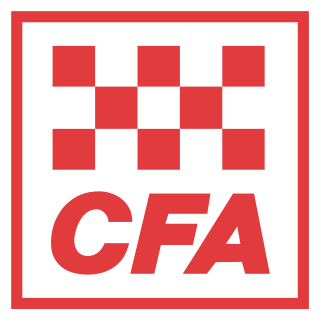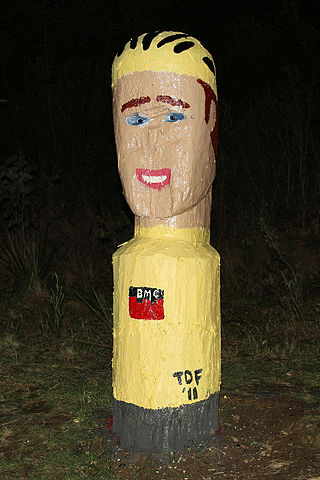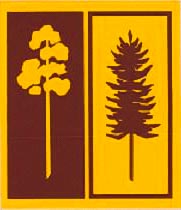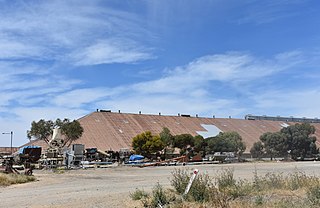Related Research Articles

The Black Friday bushfires of 13 January 1939, in Victoria, Australia, were part of the devastating 1938–1939 bushfire season in Australia, which saw bushfires burning for the whole summer, and ash falling as far away as New Zealand. It was calculated that three-quarters of the State of Victoria was directly or indirectly affected by the disaster, while other Australian states and the Australian Capital Territory were also badly hit by fires and extreme heat. As of 3 November 2011, the event was one of the worst recorded bushfires in Australia, and the third most deadly.

The Ash Wednesday bushfires, known in South Australia as Ash Wednesday II, were a series of bushfires that occurred in south-eastern Australia on 16 February 1983, which was Ash Wednesday. Within twelve hours, more than 180 fires fanned by hot winds of up to 110 km/h (68 mph) caused widespread destruction across the states of Victoria and South Australia. Years of severe drought and extreme weather combined to create one of Australia's worst fire days in a century. The fires were the deadliest bushfire in Australian history until the Black Saturday bushfires in 2009.

The Country Fire Authority (CFA) is a volunteer fire service responsible for fire suppression, rescues, and response to other accidents and hazards across most of the state Victoria, Australia. CFA comprises over 1,200 brigades organised in 21 districts, and shares responsibility for fire services with Fire Rescue Victoria (FRV), which employs full-time paid firefighters in major urban areas; and Forest Fire Management Victoria (FFMV), which manages fire prevention and suppression on Victoria's public lands. CFA operations and equipment are partly funded by the Victorian Government through its Fire Services Levy, and supplemented by individual brigades' fundraising for vehicles and equipment.

The Strzelecki Ranges is a set of low mountain ridges located in the West Gippsland and South Gippsland regions of the Australian state of Victoria.

One of the most extensive bushfire seasons in Australia's history. Victoria experienced the longest continuously burning bushfire complex in Australia's history, with fires in the Victorian Alps and Gippsland burning over 1 million hectares of land over the course of 69 days. See Bushfires in Australia for an explanation of regional seasons.

The Australian bushfire season ran from late December 2008 to April/May 2009. Above average rainfalls in December, particularly in Victoria, delayed the start of the season, but by January 2009, conditions throughout South eastern Australia worsened with the onset of one of the region's worst heat waves. On 7 February, extreme bushfire conditions precipitated major bushfires throughout Victoria, involving several large fire complexes, which continued to burn across the state for around one month. 173 people lost their lives in these fires and 414 were injured. 3,500+ buildings were destroyed, including 2,029 houses, and 7,562 people displaced.

A particularly extensive bushfire season in Australia, ran predominantly from December 2002 to March 2003 and involved over 3,000 separate fires in Victoria alone. The 2003 Canberra bushfires were also particularly severe.

The state of Victoria in Australia has had a long history of catastrophic bushfires, the most deadly of these, the Black Saturday bushfires of 2009 claiming 173 lives. Legislation, planning, management and suppression are the responsibilities of the Victorian State Government through its departments and agencies including the Country Fire Authority (CFA) and the Department of Environment, Land, Water and Planning (DELWP).

Bushfires in Australia are a widespread and regular occurrence that have contributed significantly to shaping the nature of the continent over millions of years. Eastern Australia is one of the most fire-prone regions of the world, and its predominant eucalyptus forests have evolved to thrive on the phenomenon of bushfire. However, the fires can cause significant property damage and loss of both human and animal life. Bushfires have killed approximately 800 people in Australia since 1851, and billions of animals.

The Black Saturday bushfires were a series of bushfires that either ignited or were already burning across the Australian state of Victoria on and around Saturday, 7 February 2009, and were among Australia's all-time worst bushfire disasters. The fires occurred during extreme bushfire weather conditions and resulted in Australia's highest-ever loss of human life from a bushfire, with 173 fatalities. Many people were left homeless as a result.

The Black Thursday bushfires were a devastating series of fires that swept the state of Victoria, Australia, on 6 February 1851, burning up 5 million hectares, or about a quarter of the state's area. Twelve people died, along with one million sheep, thousands of cattle and countless native animals.
A series of major bushfires occurred between 26 January and 10 March 1926 in the state of Victoria in Australia. A total of 60 people were killed with 700 injured, and 1000 buildings and 390,000 ha were destroyed across the south-east of the state.

A bushfire season occurred predominantly from June 2009 to May 2010. Increased attention has been given to this season as authorities and government attempt to preempt any future loss of life after the Black Saturday bushfires during the previous season, 2008–09. Long range weather observations predict very hot, dry and windy weather conditions during the summer months, leading to a high risk of bushfire occurrence.

Tambo Crossing is a locality and small farming community in the Shire of East Gippsland in Victoria, Australia. It is alongside the Tambo River on the Great Alpine Road, 57.5 kilometres (35.7 mi) north-east of Bairnsdale, surrounded by state forest. At the 2006 census, Tambo Crossing had a nominal population.

Mr. Stringy, also known as The Wooden Man or just The Man, is a piece of folk art that has become a popular tourist attraction on the Great Alpine Road in East Gippsland, Victoria, Australia.

The Forests Commission Victoria (FCV) was the main government authority responsible for management and protection of State forests in Victoria, Australia between 1918 and 1983.

Murtoa Stick Shed, formally known as the Number 1 Emergency Grain Store, is a large grain store (silo) in Murtoa, a town in the Wimmera region of Victoria, Australia.

The 2019–20 Australian bushfire season or Black Summer was a period of bushfires in many parts of Australia, which, due to its unusual intensity, size, duration, and uncontrollable dimension, is considered a megafire. In June 2019, it was predicted that an early start to the bushfire season, which usually begins in August, may have been possible due to exceptionally dry conditions, a lack of soil moisture and early fires in Central Queensland. Throughout the summer, hundreds of fires burnt, mainly in the southeast of the country. The major fires peaked during December 2019 to January 2020.

Two bushfire awareness totems were carved by forester David Parnaby in about 1951. They sat outside the Noorinbee office of the Forests Commission Victoria (FCV) until the mid-1960s before being moved to a new office at nearby Cann River. The totems were well known tourist icons of the township until they collapsed from rot in the late 1990s. The heads were also thought to be lost until they turned up in 2021 and were used as templates to make replica totems which were reinstated outside the DEECA office in 2023.
References
- ↑ McHugh, Peter (2020). 1965 Gippsland Bushfires : A reconstruction of events from February to March 1965. Sale, Victoria : Peter McHugh.
- ↑ McHugh, Peter (2020). Forests and Bushfire History of Victoria : A compilation of short stories. Victoria. ISBN 978-0-6450631-0-3.
- ↑ Eastman, Joanne (2020). "1965 Gippsland Bushfires". Archived from the original on 2021-11-07.